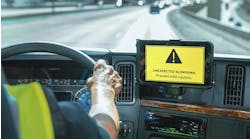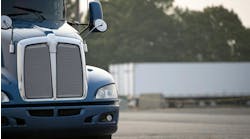One of the most well-attended seminars at the recent annual meeting of the Technology & Maintenance Council (TMC) in Atlanta focused on safety systems and how they are impacting trucking. Six senior-level industry executives each presented statistics, information and viewpoints on this crucial topic to a standing-room-only audience of many hundreds of people from fleets and other companies all over North America.
In this multi-part series Fleet Owner details each presentation, beginning with one from Rick Reinoehl, senior vice president of safety and risk management at Covenant Transport Services, headquartered in Chattanooga, TN. Reinoehl joined Covenant in 2000, and has been involved in risk management for over 25 years. He is responsible for the safety of over 3,000 tractors, 7,000 trailers and 3,750 drivers and, as panel moderator and Meritor national account manager Jack Vander Giessen put it, “the motoring public.”
“I’ve met with families involved in catastrophic accidents since about 2004, and after enough of those meetings in living rooms and mediation rooms you develop some sense of obligation towards those families,” he began. “And I’ve got to tell you that this is a very exciting time, and I’m thrilled to see where this technology is going. The first question is, does it work? Different companies will have different experiences with the devices, and different business models of operational risks and that sort of thing. This has been our experience.”
Using slides projected on two large screens, Reinoehl then explained how over the last few years Covenant has seen dramatic improvements in road safety as more and more safety systems have been included on his company’s trucks.
“We started in 2012 with roll/stability control (technology) and in a short period of time we achieved a 30% reduction in preventable rollovers,” he said. “And it’s 40% at this point because of the addition of lane departure warnings.”
Covenant’s rear-end collisions have declined 22% via the deployment of forward-collision mitigation, with an accompanying lessening in the severity of such accidents. Reineohl cited driver fatigue as a cause of ran-off-road accidents.
“We had targeted a higher reduction rate (50%)” he admitted. “Fatigue is a big issue for a company like Covenant because of a lot of expedited freight. We’ve not achieved that but I’m happy with the 14% (reduction) with trucks having this (lane-departure warning) equipment being less likely to have a fatigue-related accident.”
Significantly, with all the safety systems in place, Covenant has seen Department of Transportation recordable accidents drop 23%.
“What’s truly remarkable, and not built into our ROI, was that reduction,” he said. “I thought we’d be lucky to get a 5% reduction.”
Safety system challenges were next discussed. They included installation issues, the systems not being checked when deployed, driver manipulation of the systems and when the systems sometimes stop functioning.
“We expected some driver manipulation issues and ultimately had to put in a zero-tolerance policy,” Reineohl noted, “and actually had to lose some drivers over it before we saw some improvements.”
Keeping the safety systems products operational is also a must, he stressed.
“Once we know about something (wrong), getting operations to realize that it’s more urgent than it may seem to get these repairs done so as not to interrupt productivity is a challenge,” he said. “We have over 10 different pieces of (safety system) equipment from providers, and each one sees upgrades from time to time. It’s challenging to identify those trucks and bring them in for repairs.
Safety systems improvements points made included:
- Understanding the problem
- Getting everyone on board, from senior management down to the front lines
- Identifying how to tell issues remotely
- Using an inspection checklist that evolves
- Mapping out communication expectations
- Auditing the communication path
- Ensuring that everyone who needs to be trained is trained
- Confirmation ultimately comes with improved statistics
Reinoehl summed up by telling the audience he was excited for the future of safety systems technology. He cited these factors:
- Each iteration is better and seemingly more intuitive
- “Engineering safety” as a top priority has taken hold
- Coaching is only optimal when the coaches understand the technology
- Video continues to have real value in claims cost
To illustrate the last point, video from two actual accidents was shown, both of which proved the truck driver was not at fault.
I’m here to tell you that after all the accidents I’ve watched on video, that not a single time did I see it cost us money,” said Reinoehl. “It might make us behave differently, and we might react faster, but typically things are interpreted against us anyway. There is just no end to where technology is going to help us with our claims mitigation costs.”



